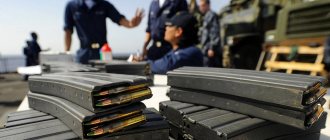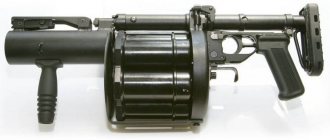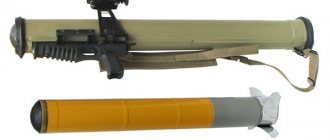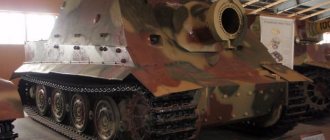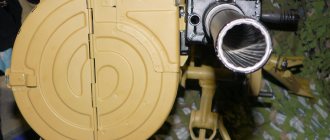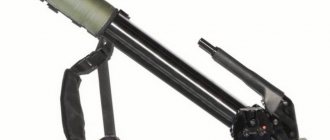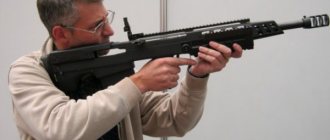| BTR-82 | ||||||||||||||||||
| BTR-82A of the Armed Forces of Kazakhstan. May 7, 2015. Astana | ||||||||||||||||||
| BTR-82A | ||||||||||||||||||
| Classification | armored personnel carrier | |||||||||||||||||
| Combat weight, t | 15,4[1] | |||||||||||||||||
| Crew, people | 3 | |||||||||||||||||
| Troops, people | 7 | |||||||||||||||||
| Story | ||||||||||||||||||
| Manufacturer | Arzamas Machine-Building Plant | |||||||||||||||||
| Years of development | 2009—2010 | |||||||||||||||||
| Years of production | 2011 - present V. | |||||||||||||||||
| Number of issued, pcs. | more than 1490 for 2022[2][3] | |||||||||||||||||
| Basic operators | see Operators | |||||||||||||||||
| Armament | ||||||||||||||||||
| Caliber and brand of gun | 30 mm, KBP | |||||||||||||||||
| Gun type | 2A72 2A42 (BTR-82AT) | |||||||||||||||||
| Sights | all-day TKN-4GA | |||||||||||||||||
| Machine guns | PKTM | |||||||||||||||||
| Engine | ||||||||||||||||||
| ||||||||||||||||||
| Mobility | ||||||||||||||||||
| Engine power, l. With. | 300 | |||||||||||||||||
| Media files on Wikimedia Commons | ||||||||||||||||||
BTR-82
is a Russian armored personnel carrier, which is a deep modernization of the BTR-80. Adopted by the Russian Armed Forces in 2013.
History[ | ]
Prototypes of the BTR-82 and BTR-82A were assembled in December 2009 at the Arzamas Machine-Building Plant (AMZ)[4][5]. The vehicles were tested in the winter of 2010, after which they were put into service. In 2011, some units of the Southern Military District were re-equipped with the BTR-82A[6].
The Armed Forces of Kazakhstan adopted the BTR-82A earlier than the Russian Armed Forces, under a contract concluded in 2010, according to which deliveries began in 2012[7].
After completion of the tests in 2013, by order of the Minister of Defense S.K. Shoigu, the BTR-82 was adopted by the Russian army[8].
BTR-87: Wonderful transformations for going abroad
Recently, the media reported that the newest BTR-87, which “grew up” from the “tank destroyer” BTR-82A, could soon turn into a full-fledged light self-propelled howitzer. It turned out that without any problems it is possible to install on it the fighting compartment of the self-propelled “Nona-SVK” (another “Volga region” - Perm-Nizhny Novgorod - development), capable of working on targets with high-explosive fragmentation "Kitolov-2", retrofitted with the Kornet missile system -EM”, etc.
Unpretentiousness of a relative
Let us recall that for the first time the general public saw a new armored personnel carrier produced by the Corps Plant from Nizhny Novgorod Vyksa in the spring of 2016, when the company published its report for 2015 with photographs, including the prototype BTR-87. Despite the fact that it had already been mentioned several months earlier and was even, according to some sources, exhibited at the Army 2017 forum - however, only as part of a closed display. But one way or another, the data that the “eighty-seventh” is the product of a deep modernization of such a worthy machine as the BTR-82A “leaked” to the Internet even before its image.
Last May, we talked about how the BTR-82A, which was traditionally produced at the Arzamas Machine-Building Plant, was put into service in 2013 (see “Iraqi’s choice of a Russian armored personnel carrier”). More precisely, then two options were adopted - the BTR-82 and the BTR-82A, but they differed from each other mainly only in the features of the weapons, the absence / presence of an automatic 30 mm cannon. From its predecessor, perhaps the most popular armored personnel carrier, the BTR-80. The legendary “shaitan-arba” - “twos” were distinguished by a more powerful and unpretentious (according to rumors, easily digesting even diesel fuel) engine, an improved chassis, new anti-fragmentation protection and topographic orientation systems, various digital add-ons and the latest generation cryptographic protections.
The appearance of the “eighty-second” made the debate even more urgent - what exactly are these Russian armored personnel carriers - armored personnel carriers, designed only for transporting fighters, or are their capabilities in terms of fire support enough to be considered, albeit informal, but combat vehicles infantry. However, these vehicles also retained some of the legacy of the “eighties” - in particular, the principle of landing fighters only from the sides, and not from the stern, which, according to many experts, was a serious disadvantage.
Competition boomerang
And it was the new layout, much more in line with the latest trends, that became one of the main differences of the BTR-87. Troops now land there through the rear hatches, and the crew additionally covers the forward engine. But here it is worth recalling that it was last year that the military actively started talking about the possible imminent replacement of the “eighty-second” with armored personnel carriers and infantry fighting vehicles created on the basis of the “Boomer” - the promising unified wheeled platform “Boomerang”, created by the same Arzamas craftsmen.
In the summer it was announced that this very image project was about to complete preliminary tests, enter the state tests and learn to swim (“We are lightening the weight, and our task is to make the car float. Now it is quite large in weight, but we We believe that we will succeed”), and serial deliveries of the “Boomerang” are scheduled for 2022. The main features of the “Boomerang” were almost unprecedented security with multi-layer “tank” armor, as well as an engine located in the front part of the hull and , as a result, providing the long-awaited possibility of landing from the rear stern, and not from the sides. That is, the same feature as the BTR-87. However, experts and ubiquitous journalists already seem to have decided on the division of the future between “Boomer” and “eighty-seven”. “It is worth noting that the BTR-87 is intended mainly for export. A modern and, importantly, affordable and repairable armored personnel carrier is needed by many buyers. Created on the basis of vehicles that have proven their reliability, the new armored personnel carrier will certainly be of interest to them,” wrote RG.
Oksana Drapkina: Rules for healthy New Year holidays
Will “Nona” be sung in a new way?
After the BTR-87 was openly shown for the first time in August of this year (and not in a photo, but in real life) at the international military-technical forum “Army-2017”, there was information that its protection can withstand a shot from the frontal projection 23-mm automatic cannon from a distance of 500 meters, and from the side - a burst from a 12.7 mm machine gun.
Initially, the standard armament of the BTR-87 was reduced to the classic “pair” - a 30 mm gun paired with a 7.62 mm Kalashnikov tank gun. However, it later turned out that in addition to a more powerful engine and a “stern” landing compartment, this armored personnel carrier also has a certain universal turret strap, due to which the armored personnel carrier can be installed with a wide variety of combat modules, retrofitted with unguided rockets, “Bumblebee” flamethrowers, anti-tank missiles. Or, for example, supplement the transport with a fighting compartment from the self-propelled Nona-SVK. Let us recall that back in the 80s, the designers of the future Motovilikha Plants in Perm began working on it (the chassis for it was already invented at GAZ on the basis of the BTR-80), and since the 90s, Nona has been mass-produced at the same Motovilikha.
It is believed that this weapon is capable of conducting targeted fire without prior preparation from closed positions and direct fire with any type of 120 mm mines as domestically produced. However, its baptism of fire in the First Chechen War revealed its obvious shortcomings: limited horizontal guidance angles, small transportable ammunition, lack of automation in terms of guidance) - however, on the other hand, the Nona differed from its foreign analogues in its low price, which may have affected , on its export demand - in particular, it is known about the supply of several dozen “Nona” to Venezuela in the tenth years.
In 2012, then Defense Minister Anatoly Serdyukov announced the ministry’s refusal to purchase equipment “that does not meet the requirements of the Armed Forces, or the testing of which has not been completed.” Eighteen Nona-SVK guns with a total cost of more than 306 million rubles were also included in this list. Later, it was announced that the development of a new 120 mm gun to replace the None-SVK had begun - according to the idea, it was a new Perm development "Vena", "transferred" from the tracked BMP-3 to the wheelbase of the BTR-90, however, according to the latest data, this project is still frozen.
Subscribe to us on VKontakte
Construction[ | ]
- Sight TKN-4GA
- Combat module
The vehicle is equipped with an 8-cylinder 4-stroke V-shaped diesel engine KAMAZ-740.14‑300 with a power of 300 hp. With.
The turret design is a unified module equipped with a weapon stabilization system in two planes and electric drives. The armament is represented by a 14.5 mm KPVT machine gun (for the BTR-82) or a rapid-fire 30 mm 2A72 cannon (for the BTR-82A), coaxial with a 7.62 mm PKTM machine gun in the turret gun-machine-gun mount (BPPU) module. The twin weapons are equipped with an electric drive and a digital two-plane stabilizer, a combined all-day gunner's sight TKN-4GA with day and night channels, with a stabilized field of view and a control channel for remote projectile detonation[9]. On the modification of the TKN-4GA-03 sight, the night channel is replaced by a thermal imaging one.
Increased survivability, maneuverability, reliability and service life compared to the BTR-80. There is anti-fragmentation protection in the form of special linings on the inner surface of the case and air conditioning[10]. The armored personnel carrier received digital radio stations Aqueduct
with signal encryption and combined surveillance devices. Increased mine resistance[11][12].
With the presence of a gun stabilization system, it became possible to effectively fire on the move and at night. Anti-fragmentation protection is mounted on the internal surfaces of the housing. The regular operator position on the BTR-82A has moved from the turret to the crew compartment. In order to reduce the impact of mines, all seats are installed on shock-absorbing mounts. The vehicle is equipped with a new and improved fire extinguishing system[13].
Device Description
The placement of components and assemblies of the new armored personnel carrier remains traditional. This will play a negative role in the future, but more on that later. So, the engine and transmission compartment of the BTR-90 is located in the stern, and the fuel tanks are also located there. This ensures reduced engine vulnerability. In this case, however, it becomes impossible to embark and disembark shooters through the stern. And this method is currently considered the safest.
The armor was not reported in detail, with the exception of statements about the use of armor plates of increased thickness. At the same time, the greatest thickness of the armor of the previous BTR-80 reached 10 mm. And modern armor-piercing bullets like M993 of 7.62mm caliber have a declared penetration of up to 18mm of armor.
Probably, statements about reliable protection from fire from large-caliber machine guns should be considered an exaggeration, or in this case we were not talking about armor-piercing bullets. There is information that the thickness of the turret forehead of the BTR-90 Rostock is 23mm. And NM173 12.7mm bullets should penetrate 22mm thick armor at a distance of up to 900m.
To increase survivability in case of mine explosions, the bottom of the armored personnel carrier was changed, making it V-shaped. Considering how popular “mine-resistant” armored vehicles became at the beginning of the 21st century, this was a very successful and timely decision. It is also noteworthy that the front plate of the BTR-90 consisted of one piece, and the front hatches and windshields were abolished.
As on previous vehicles, the troops enter the armored car through the side hatches between the second and third wheels.
Additionally, there are two hatches in the roof behind the turret. The side embrasures through which soldiers can fire from small arms have been preserved. They are closed hermetically with flaps.
Traditionally, Soviet and Russian armored personnel carriers were produced equipped with a KPVT heavy machine gun and a coaxial PKT. The armament of the BTR-90 has become much more powerful. The “basic configuration”, known as the BTR-90 “Rostok”, has a 30mm automatic cannon and a 7.62mm machine gun, an AGS-17 automatic grenade launcher and Konkurs anti-tank missiles. Not every infantry fighting vehicle carries such a number of weapons. And the two-plane stabilizer allows the armored personnel carrier to effectively fire while moving.
The BTR-90 “Berezhok” is even more heavily armed. The automatic grenade launcher of this modification has been replaced by the more modern and lightweight AGS-30, and the missile armament has been strengthened by installing a laser-guided Kornet ATGM. In addition, the Berezhka gunner received a thermal imager and a fire control system with an automatic ballistic computer.
Finally, the BTR-90M, equipped with the Bakhcha combat module, is armamentally similar to the BMP-3. The automatic cannon and 7.62mm machine gun are complemented by a 100mm caliber gun. It fires high-explosive fragmentation shells, and to destroy armored vehicles it launches Arkan guided missiles through the barrel. The additional weapons of the BTR-90 include 81mm smoke grenade launchers - six installations are located on the sides of the turret.
The crew of the BTR-90 armored personnel carrier was located differently than on previous armored personnel carriers. Previously, the commander of the vehicle sat in the right front seat, next to the driver, and the turret was single-seat. Now the commander and gunner sit in a two-man turret, left and right. The seat next to the driver was assigned to the senior gunner.
The driver, having lost the windshield, in non-combat conditions observes the road situation from the hatch, raising the seat.
In battle he uses five periscopes. Behind the combat module is a compartment for landing troops, it contains trauma-resistant seats for seven shooters. To protect soldiers during mine explosions, the seats are suspended from the sides.
The BTR-80 was equipped with a conventional Kamaz eight-cylinder diesel engine with a power of 210 hp. But the “heart” of the BTR-90 was the six-cylinder boxer engine 2V-06, first used on the BMD-3. Its power was increased to 510 hp. – this is twice as much as its predecessor. It’s not surprising that with the increased mass, the “ninetieth” has become even more mobile. Although fuel consumption has increased to one hundred liters per hundred kilometers on the highway, however, the overall range has also become higher.
The traditional manual gearbox has given way to a hydromechanical one. And the main innovation was the introduction of hydrostatic transmission into the transmission. It makes it possible to rotate the wheels at different speeds, turning the armored personnel carrier literally on the spot.
The design of the water jet propulsion system has changed. Instead of one water cannon installed in the center of the hull in the stern, the BTR-90 now has two of them - on the outside of the sides. Water cannon propellers have three blades. The suspension remained independent torsion bar, with hydraulic shock absorbers and a tire pressure control system.
The BTR-90 became the first Russian wheeled combat vehicle to have an on-board information and control system installed.
In addition, the armored personnel carrier has improved protection against weapons of mass destruction.
Modifications[ | ]
BTR-82A, exhibited at the Tank Biathlon-2014 competition. Upgraded armored personnel carrier BTR-82AM BTR-82AT with the BTR-BM combat module at the Army-2021 exhibition.
- BTR-82A
- modification with a 30-mm 2A72 cannon in the BPPU module. - BTR-82A1 (BTR-88[14])
- a modernized BTR-82, equipped with a remote-controlled combat module developed by the Burevestnik Central Research Institute with a 30-mm automatic cannon and a 7.62-mm machine gun. - BTR-82AM
- BTR-80 upgraded to the level of BTR-82A. Modernization is carried out during major overhauls at repair plants.[15] - BTR-82AT
- modification with a set of additional screens and grilles, a combined two-channel sight and a Kornet ATGM in the troop compartment.[16] - BTR-82V
is a variant for the Russian Guard with a combat module from the BTR-80[17]. - BTR-87
- a deep modernization of the BTR-82A, has a completely new armored hull with a front-mounted engine compartment and a rear-mounted compartment for paratroopers. Developed by Military Industrial Company LLC (GAZ Group) and mainly intended for export. It was first shown in June 2015 at the international military-technical forum “Army-2015” in Patriot Kubinka Park[18].
Story
The characteristics of the BTR-82A prompted military designers to create an improved type of armored personnel carrier. The BTR-87 turned out to be not just a transport for landing troops, but in terms of combat capabilities it is a modern infantry fighting vehicle. The insufficient protection of the crew and paratroopers did not allow the Eighty-Second to conduct full-fledged close combat due to the lack of frontal armor. Like many modifications of the Soviet design on the basis of the same BTR-80, this time a modified design is born - the BTR-87 wheeled combat vehicle, the reason is the installation of the engine in the front part of the hull.
Operators[ | ]
Play media file
Amphibious capabilities of the BTR-82A 336th Guards. MRMP during an exercise in the Baltic Sea. March 17, 2022.
- Abkhazia: 100 units as of 2022
- Azerbaijan: more than 44 units as of 2022[20]
- Kazakhstan: 70 BTR-82A, as of 2022[21]
- Russia, for 2022:
- Ground forces: 1000 BTR-82A/AM[22]
- Coastal Naval Forces: 700 BTR-82A[23]
- Airborne troops: 130 BTR-82AM[24]
- National Guard troops: unknown number of BTR-82A/BTR-82AM[25]
- Syria: unknown number of BTR-82A as of 2020[26].
Combat use[ | ]
- In 2014, Armament Research Services, based on information posted on social networks[27], posted information about the presence of armored personnel carriers among supporters of the self-proclaimed republics[28]. Ukrainian Defense Minister Valeriy Geletey accused the Russian Federation of supplying this type of equipment to the conflict zone[29].
- At the end of August 2015, the Syrian army published a video of an BTR-82A. The coloring of the vehicles corresponded to that used in the Russian Armed Forces. Observers suggest that the vehicles were taken from Russian army stocks and delivered to Syria on the Russian large landing ship Nikolai Filchenkov[30][31].
- In the fall of 2022, during the conflict in Nagorno-Karabakh, BTR-82s were used by the Azerbaijani army. At least one unit was lost during the conflict[32]. After the signing of a tripartite peace agreement, Russian peacekeepers were deployed to the conflict zone, also using BTR-82.[33]


